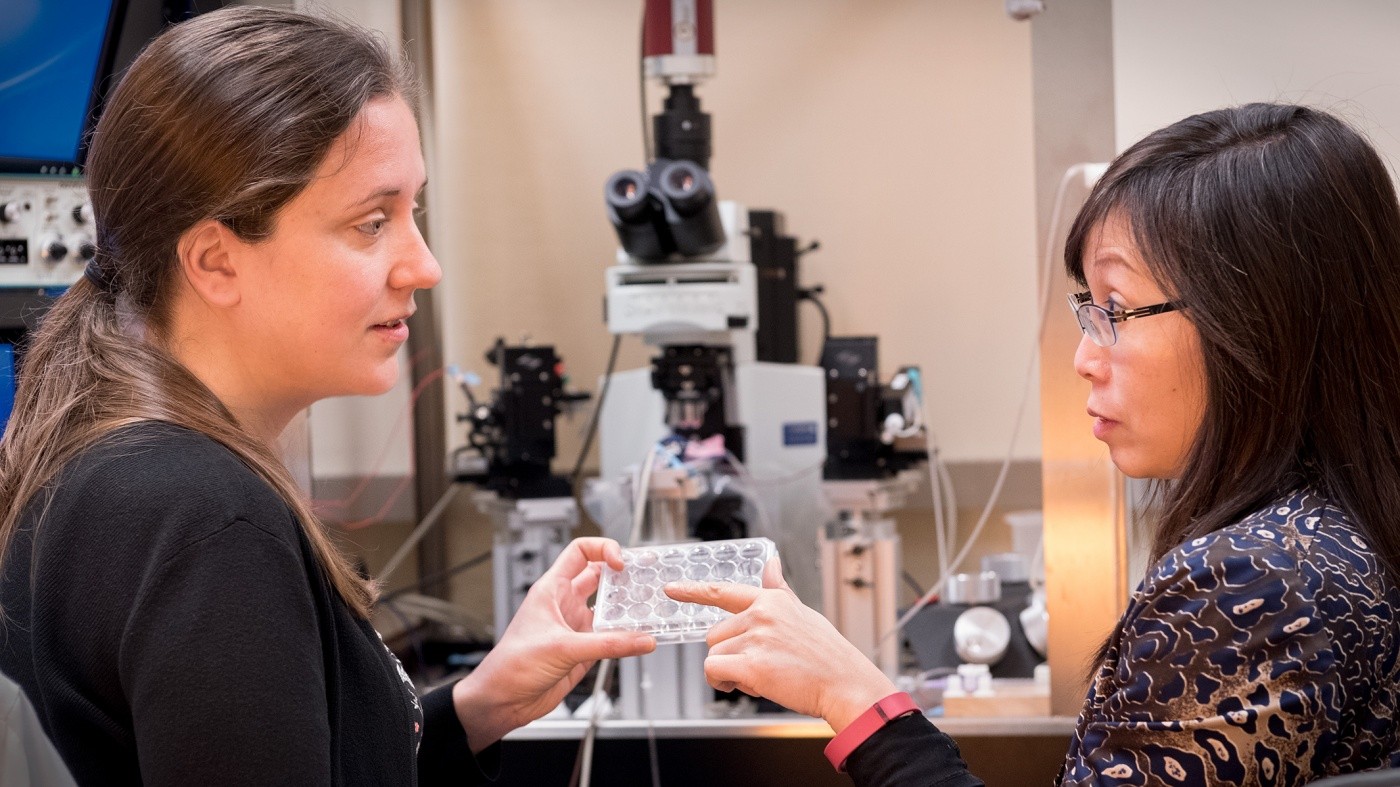Gladstone NOW: The Campaign Join Us on the Journey✕

Tara Tracy, PhD, and Li Gan, PhD, have uncovered how the protein tau prevents new memories from forming in Alzheimer’s disease. [Photo: Chris Goodfellow, Gladstone Institutes]
Scientists have long known that the protein tau is involved in dementia, but how it hinders cognitive function has remained uncertain. In a study published in the journal Neuron, researchers at the Gladstone Institutes reveal how tau disrupts the ability of brain cells to strengthen connections with other brain cells, preventing new memories from forming.
“Understanding why and how tau is toxic to neurons is the first step in repairing or preventing the damage it causes in Alzheimer’s disease,” said senior author Li Gan, PhD, a senior investigator at Gladstone. “We learned that tau disrupts memory in models of Alzheimer’s disease by depleting another protein, KIBRA, which is critical for memory formation. With this knowledge, we can explore ways to increase KIBRA with drugs that block the harmful effects of tau.”
Memories are formed when chemical signals strengthen the connection between neurons. To maintain the memories, neurons physically change, recruiting more chemical receptors to the surface where the connections are made (the synapse) to increase the strength of incoming signals. If the connections among neurons weaken or are lost, so is the memory.
In the current study, the scientists discovered that, in a mouse model of Alzheimer’s disease, the accumulation of tau in neurons disrupts the cells’ ability to strengthen their connections with other neurons, preventing them from stabilizing new memories. This is because a natural chemical modification of tau called acetylation that is exacerbated in Alzheimer’s disease results in tau moving from its normal location in the neuron to the synapse. At the synapse, tau depletes another protein called KIBRA (KIdney/BRAin protein), a process that prevents neurons from adapting and strengthening their connections. Increasing KIBRA levels reversed the harmful effects of acetylated tau and restored the cells’ ability to form memories.
Supporting the clinical relevance of this finding, the researchers also found that KIBRA is decreased in the brains of patients with Alzheimer’s disease, which correlated with an increase in acetylated tau.
“Our findings suggest that KIBRA may be the missing link between tau and memory loss in Alzheimer’s disease,” said first author Tara Tracy, PhD, a postdoctoral scholar at Gladstone. “The next step is to determine precisely how acetylated tau causes KIBRA levels to drop, and to explore whether our findings may help develop better treatments for Alzheimer’s disease.”
Want to Join the Team?
Our people are our most important asset. We offer a wide array of career opportunities both in our administrative offices and in our labs.
Explore CareersScience in Seconds | The Thinking Microscope: Research Powered by an AI Brain
Science in Seconds | The Thinking Microscope: Research Powered by an AI Brain
In this video, Steve Finkbeiner and Jeremy Linsley showcase Gladstone’s groundbreaking “thinking microscope”—an AI-powered system that can design, conduct, and analyze experiments autonomously to uncover new insights into diseases like Alzheimer’s, Parkinson’s, and ALS.
Gladstone Experts ALS Alzheimer’s Disease Parkinson’s Disease Neurological Disease Finkbeiner Lab AI Big DataKaterina Akassoglou Receives Zenith Fellows Award to Advance Alzheimer’s Research
Katerina Akassoglou Receives Zenith Fellows Award to Advance Alzheimer’s Research
Akassoglou has opened doors to understanding how the blood protein fibrin is involved in Alzheimer’s and other neurodegenerative diseases.
Awards News Release Alzheimer’s Disease Center for Neurovascular Brain Immunology Akassoglou LabMeet Gladstone: Oscar Yip
Meet Gladstone: Oscar Yip
Oscar Yip is advancing Alzheimer’s research in Yadong Huang’s lab at Gladstone while drawing inspiration from his family, community, and his broader goal of helping patients.
Graduate Students and Postdocs Profile Alzheimer’s Disease



